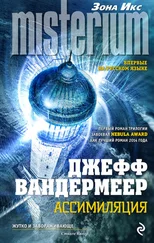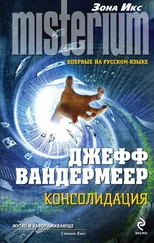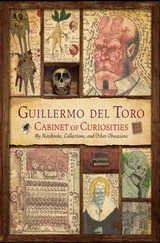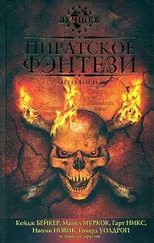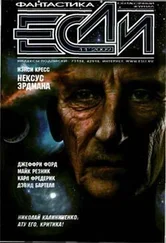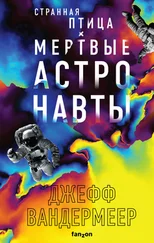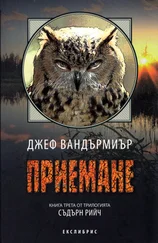Джефф Вандермеер - The Thackery T. Lambshead Cabinet of Curiosities
Здесь есть возможность читать онлайн «Джефф Вандермеер - The Thackery T. Lambshead Cabinet of Curiosities» весь текст электронной книги совершенно бесплатно (целиком полную версию без сокращений). В некоторых случаях можно слушать аудио, скачать через торрент в формате fb2 и присутствует краткое содержание. Жанр: Фэнтези, на английском языке. Описание произведения, (предисловие) а так же отзывы посетителей доступны на портале библиотеки ЛибКат.
- Название:The Thackery T. Lambshead Cabinet of Curiosities
- Автор:
- Жанр:
- Год:неизвестен
- ISBN:нет данных
- Рейтинг книги:5 / 5. Голосов: 1
-
Избранное:Добавить в избранное
- Отзывы:
-
Ваша оценка:
- 100
- 1
- 2
- 3
- 4
- 5
The Thackery T. Lambshead Cabinet of Curiosities: краткое содержание, описание и аннотация
Предлагаем к чтению аннотацию, описание, краткое содержание или предисловие (зависит от того, что написал сам автор книги «The Thackery T. Lambshead Cabinet of Curiosities»). Если вы не нашли необходимую информацию о книге — напишите в комментариях, мы постараемся отыскать её.
The Thackery T. Lambshead Cabinet of Curiosities — читать онлайн бесплатно полную книгу (весь текст) целиком
Ниже представлен текст книги, разбитый по страницам. Система сохранения места последней прочитанной страницы, позволяет с удобством читать онлайн бесплатно книгу «The Thackery T. Lambshead Cabinet of Curiosities», без необходимости каждый раз заново искать на чём Вы остановились. Поставьте закладку, и сможете в любой момент перейти на страницу, на которой закончили чтение.
Интервал:
Закладка:
One piece of burned cork, dated around 1910, supposedly used by Charles Chaplin as part of the makeup for his character “The Inebriate,” performed with travelling comedy troupe Fred Karno’s Army during that same year.
One gentleman’s bicycle and two-wheeled trailer, also circa 1910, having no working brakes and being fitted with thick lengths of rope around the wheel-rims rather than the usual rubber tyres.
One printed pamphlet dating from 1738, titled “Submission to Divine Providence in the Death of Children recommended and enforced in a SERMON preached at NORTHAMPTON on the DEATH Of a very amiable and hopeful CHILD about Five Years old.”
Imaginary children’s book retrieved from dream of school, with green cloth boards and gold inlay illustration depicting a group of children including an older boy wearing a bowler hat. The book is titled The Dead Dead Gang, and its author is, apparently, one Marjorie Miranda Driscoll, a ten-year-old known more usually as “Drowned Marjorie.”
Scrapbook of Princess Diana memorabilia, covering the period 1997–2005, belonging to Roberta Marla Stiles, an eighteen-year-old sex worker and crack cocaine addict who has decorated the book’s cover with a collage of her own design, combining a sunset scene from a Sunday colour supplement with a picture of the late Diana Spencer’s face pasted inexpertly onto the sun.
Artists’ materials, circa 1865, thought to belong to Ernest Vernall, a worker employed in retouching the frescoes decorating the interior of the dome of London’s St. Paul’s Cathedral.
Artist’s materials, circa 2015, belonging to Ernest Vernall’s great-great-granddaughter, illustrator Alma Warren.
Sledgehammer, used in steel-drum reconditioning by Ernest Vernall’s great-great-grandson and Alma Warren’s younger brother, Michael.
THE ABOVE EXHIBITS, after cataloguing, have all been returned to the locations where they were discovered, ready and in place for when work once again resumes upon the structure, progressing towards its revised completion date of 2013.
Visits and Departures
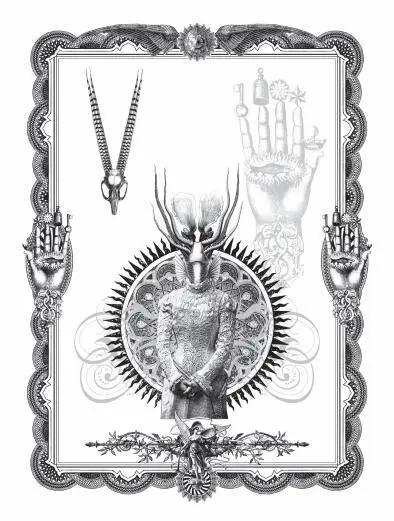
Visits
Over the years, several people visited Dr. Lambshead, and saw his cabinet. Few, however, can agree on its dimensions, exact location, or its contents. Sometimes, it isn’t even clear that these visitors actually saw the core collection rather than just an overflow room on the first floor of the house. In three separate journal entries, Lambshead alludes to “a special room for the rubes,” which he set up out of frustration at the number of requests to visit his cabinet. Many times he would relent and allow a visit, only to have his housekeeper lead the party in question to “the Rube Room” and then out the front door again.
A few notes on these entries, regardless of their accuracy. First, there is no truth to the claim that the chronicler of “The Singular Taffy Puller” simply “mistook Lambshead’s kitchen for his cabinet,” as put forward by Poe scholar S. J. Chambers. Nor is Mur Lafferty’s failure to pass a polygraph test in 1965 relevant to her account. Those who doubt the testimony of Rachel Swirsky, meanwhile, should note that in 1994 she underwent a five-hour polygraph interrogation about her visit as part of misguided therapy for her “condition.”
Finally, better investigators than the current editors have come up with inconclusive evidence as to the veracity of Lambshead’s housekeeper, Paulette, whose account ends this section. Certainly, it’s as good a story as any, even if it paints a rather narrow portrait of the good doctor.
As for more personal “visits and departures,” Lambshead wrote on the subject in his journal while visiting newly independent Algiers in the late 1960s. He was no doubt thinking back to his involvement on the side of the National Liberation Front during the fight against the French a decade earlier.
“A visit presages its own departure, and almost no one makes it out,” he wrote. “There’s a hideous truth hidden in there—that sometimes things do the visiting for you and sometimes they’re the message. Sometimes, too, whether it’s a bullet or a collapsed roof or a fire or some other act of fate or chance, you don’t always get to take out what you brought with you—even your own life.”
Reports that a Greek woman, about a decade younger than Lambshead, was seen with him in Algiers that year, much as his wife, Helen, had in the 1950s, are entirely apocryphal. Certainly, no one matching the description appears in any of the official state footage of various public events. Indeed, Lambshead himself is rarely on display in these films—a matter of a few seconds here and there, his image soon gone and fading.
1929: The Singular Taffy Puller
As Told to N. K. Jemisin
I had traveled far—along the bustling coast by rail, then across the Atlantic by steamship, at great expense, I might add—on a matter of pride. Or, more specifically, dessert. You see, the cobbled and sweaty streets of my city would reek but for the exquisite aromas that offer relief from horse manure and overindulgence. Wrinkle your nose and you might miss the scent of the most delicate amaretto fondant, or creamy divinities solidifying to tooth-tenderness. And when the pecan harvest is brought—ah, me! You never tasted pralines like mine.
But those selfsame streets are crowded with eateries these days, and an old octoroon spinster looking to make a name for herself must employ more than the braggadocio that paler, maler chefs may indulge. Especially given that, of late, my business had suffered by its proximity to a flashy new restaurant next door. It was for this reason that I traveled to the house of the esteemed doctor, and was ushered into the renowned cabinet, so that I could at last behold the item that might—I hoped—save my business.
On entry to the doctor’s home, I was momentarily stunned by the profusion of wonders within. These included the cabinet itself: a room of what had been handsome walnut wainscott and elaborately worked moulding (French rosettes and Egyptian cartouches, of all the mad combinations), though the lingering evidence of half-finished reorganization obscured the best of it. What remained of the chamber’s treasures had been tossed, with no apparent regard for further cataloguing or even convenience, onto bookshelves, plinths, and racks, which quite crowded the space. Someone, however, had at least made an effort to group the items by purpose, so after some searching, I discovered the relevant rack. This was a baker’s rack, naturally: three shelves of well-made ironwork fashioned into the most peculiar decorative geometries—what might have been lettering in some tongue of the far Orient, or the lost Toltec. But I will admit I spared less attention for the rack itself than for what it held.
All of the items were cooking implements of some sort: tongs for cooks lacking thumbs; an exceptionally large corkscrew; a strainer that, to all appearances, was solid but whose label indicated it could sift out bacterial particulates if given several days to work. There was also a fine Dutch oven, rather plainly enameled in white, whose lid had been securely tied with twine, then glued-and-papered over at each knot, then clamped with three vices, each of which appeared to have been welded so as not to turn. Like all the scions of Pandora who encompass my sex, I was most tempted to peel back at least one of the taped-over bits. My hand was stayed not by prudence, however, but by greed and impatience; the oven was not what I had come for.
At last I found it, behind a half-melted waffle iron: the Singular Taffy Puller.
Читать дальшеИнтервал:
Закладка:
Похожие книги на «The Thackery T. Lambshead Cabinet of Curiosities»
Представляем Вашему вниманию похожие книги на «The Thackery T. Lambshead Cabinet of Curiosities» списком для выбора. Мы отобрали схожую по названию и смыслу литературу в надежде предоставить читателям больше вариантов отыскать новые, интересные, ещё непрочитанные произведения.
Обсуждение, отзывы о книге «The Thackery T. Lambshead Cabinet of Curiosities» и просто собственные мнения читателей. Оставьте ваши комментарии, напишите, что Вы думаете о произведении, его смысле или главных героях. Укажите что конкретно понравилось, а что нет, и почему Вы так считаете.

